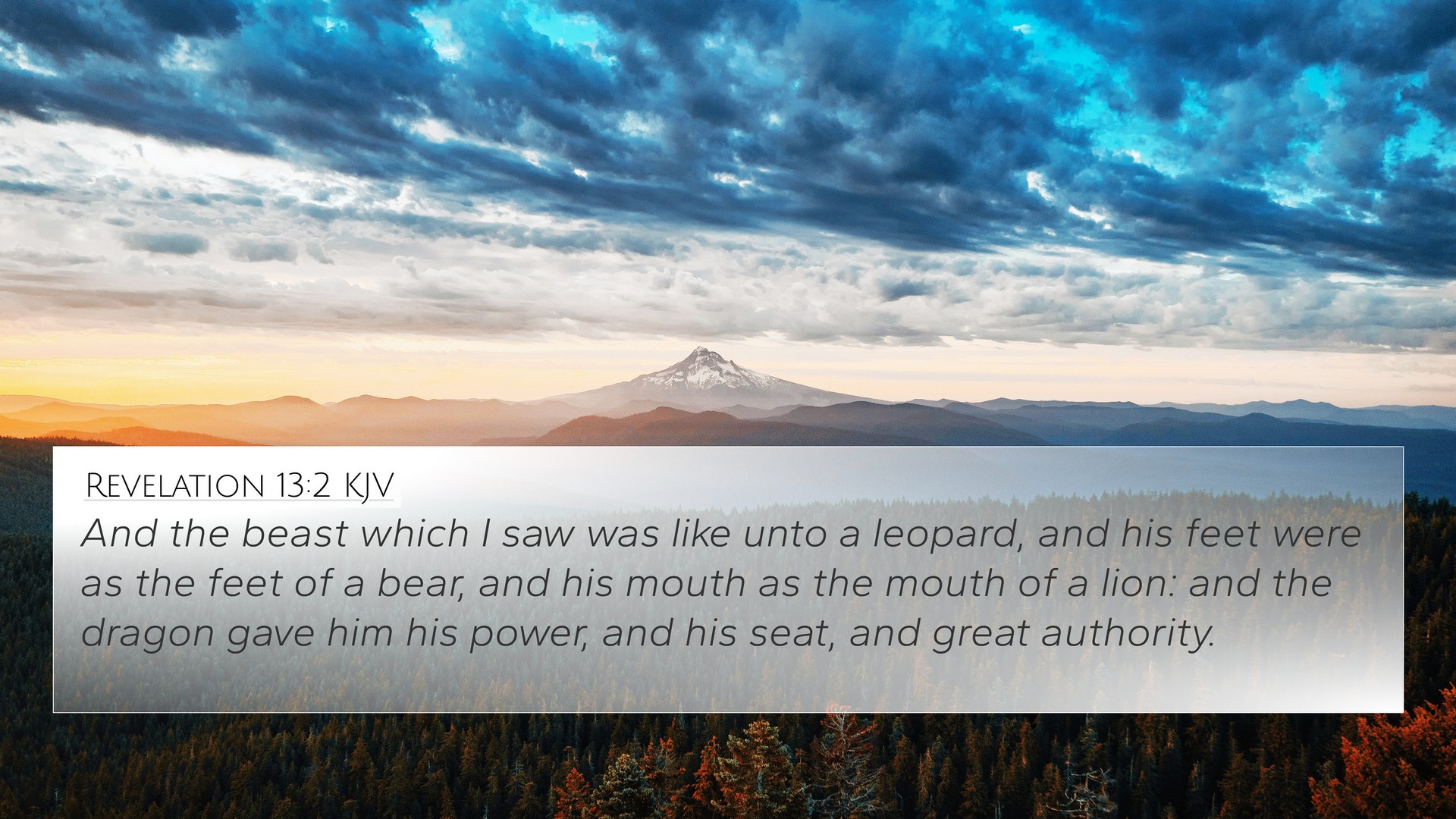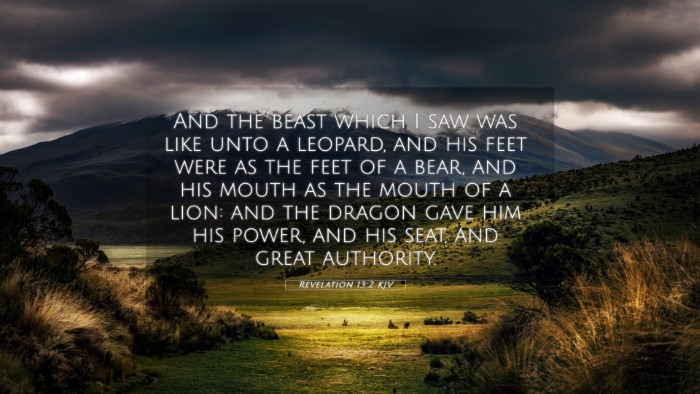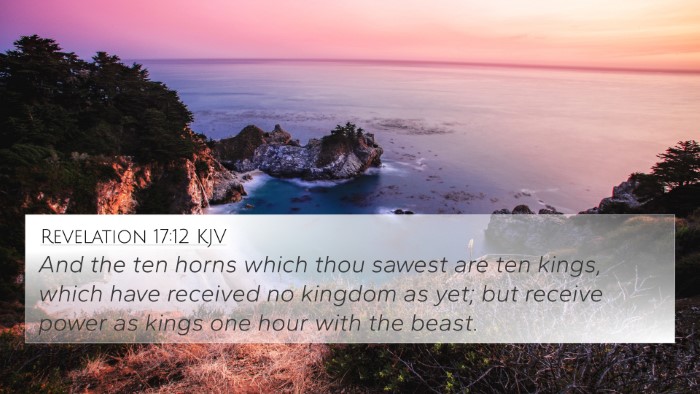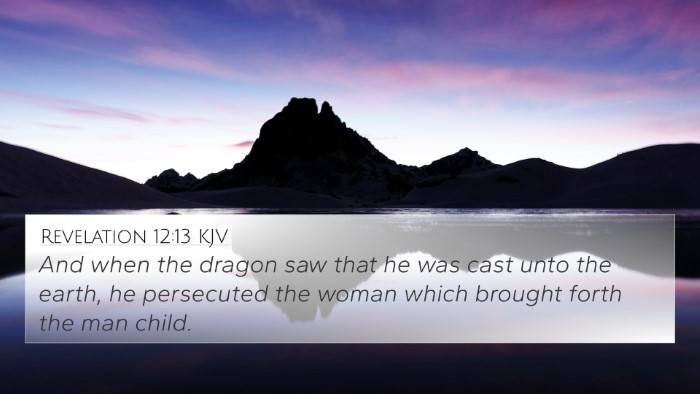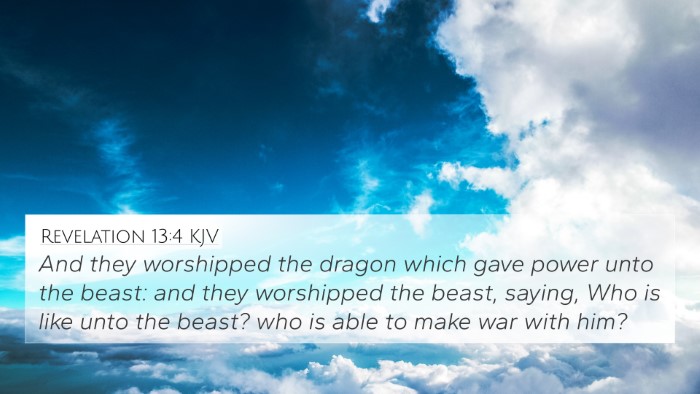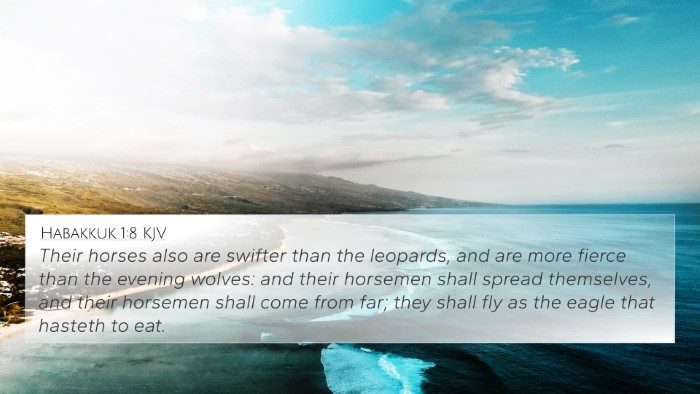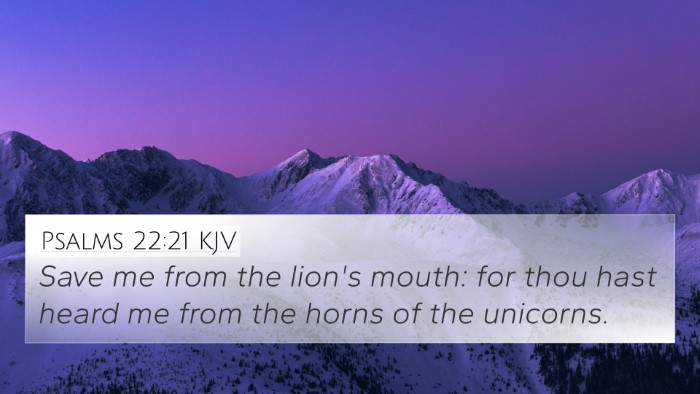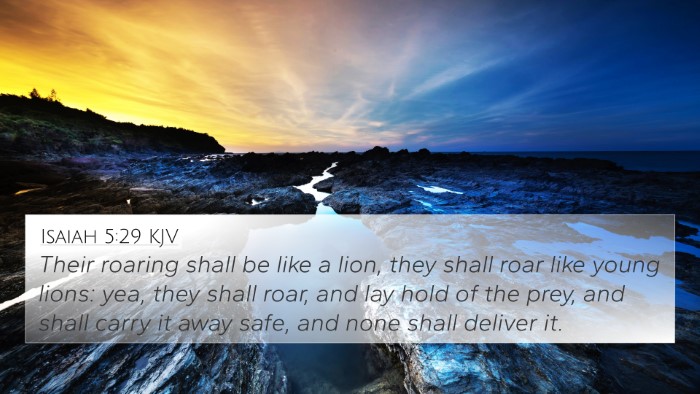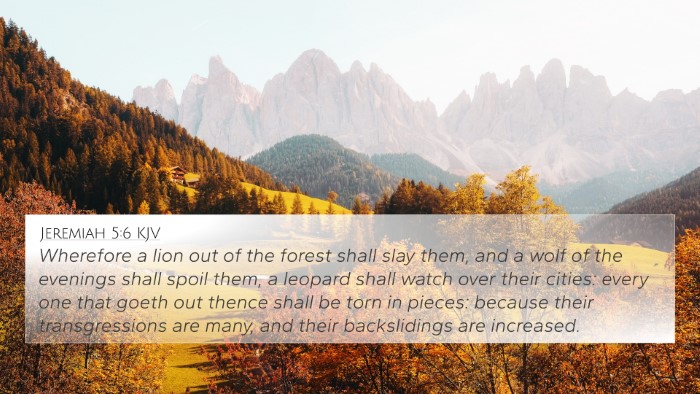Understanding Revelation 13:2
Revelation 13:2 states: "And the beast which I saw was like unto a leopard, and his feet were as the feet of a bear, and his mouth as the mouth of a lion: and the dragon gave him his power, and his seat, and great authority."
This verse is rich in symbolism and signifies the emergence of a powerful figure often interpreted as a representation of antichrist elements. In combining insights from public domain commentaries, we explore the meaning and implications of this verse.
Summary of Key Insights
The imagery in this verse draws from the characteristics of various animals which represent different empires and kingdoms throughout biblical history. The beast symbolizes a conglomerate of evil authority and challenges the sovereignty of God.
Symbolic Interpretation
Leopard: The leopard is often seen as representing swiftness and cunning, possibly identifying with the Grecian Empire that spread its influence rapidly.
Bear: The bear symbolizes raw power and strength, commonly linked to the Medo-Persian Empire, illustrating fierce oppression.
Lion: The lion represents authority and majesty. This could reflect the Babylonian Empire, showcasing the danger of pride and tyranny.
The Role of the Dragon
The "dragon" mentioned in this verse is a clear reference to Satan, noted in Revelation 12:9. This connection implies that the beast is empowered by demonic forces, indicating its opposition to Christ's authority.
Cross-Referencing Biblical Texts
This verse is intricately linked with several other biblical passages:
- Daniel 7:4-7 - The four beasts that symbolize empires reflect similar themes of power and authority.
- Revelation 12:3 - Describes the dragon, enhancing the understanding of its malign influence.
- Revelation 17:10 - Refers to the seven heads, expanding the concept of historical kingdoms.
- Matthew 24:24 - Warns of false prophets and deceivers, which aligns with the nature of the beast.
- John 10:10 - References the thief (Satan) who comes to kill, steal, and destroy, complementing the beast’s destructive nature.
- 2 Thessalonians 2:3-4 - Speaks about the man of sin revealing himself, connecting to the authoritative position of the beast.
- Isaiah 14:13-14 - Describes the ambitions of Satan, reminiscent of the fallen nature of the beast.
Insights from Commentators
Matthew Henry emphasizes the moral and spiritual lessons to be derived from this verse, urging believers to remain vigilant against the deceptive powers at work.
Albert Barnes discusses the implications of the beast's authority, noting that earthly powers often reflect a higher spiritual battle.
Adam Clarke elaborates on the typologies present in the animals, linking them to historical contexts and their relevance for contemporary readers.
Thematic Connections
Understanding Revelation 13:2 requires a thematic study of the principles of power, deception, and spiritual warfare woven throughout scripture. The beast serves not just as a symbol of a particular figure but rather embodies the ongoing fight between good and evil. It raises questions about authority and the consequences of turning away from divine guidance.
Practical Applications
The interpretation of Revelation 13:2 encourages believers to critically assess the influence of worldly systems and remain anchored in faith as they navigate modern challenges. Utilizing tools for Bible cross-referencing enhances the depth of understanding these complex themes.
Conclusion
Revelation 13:2 opens a window into the spiritual realities that underlie political and social powers. By engaging with this verse and its cross-references, readers can gain insightful perspectives on the nature of evil and the ultimate supremacy of Christ over all authority. This journey through interconnected scriptures not only elucidates the meaning of the beast but also fortifies faith against deception.
Additional Resources
To explore more about cross-referenced themes in the Bible, consider utilizing a Bible concordance or a cross-reference Bible study guide. Here, one may locate connections between the Old and New Testament, facilitating a deeper understanding of biblical narratives.
